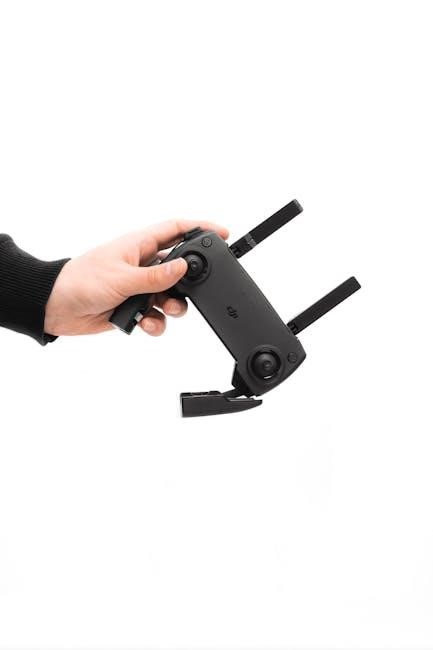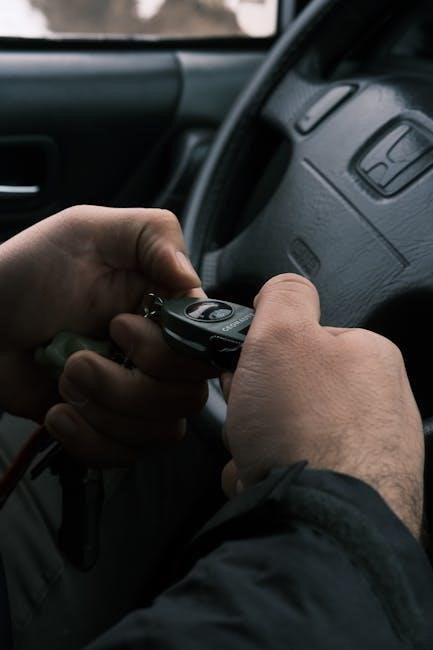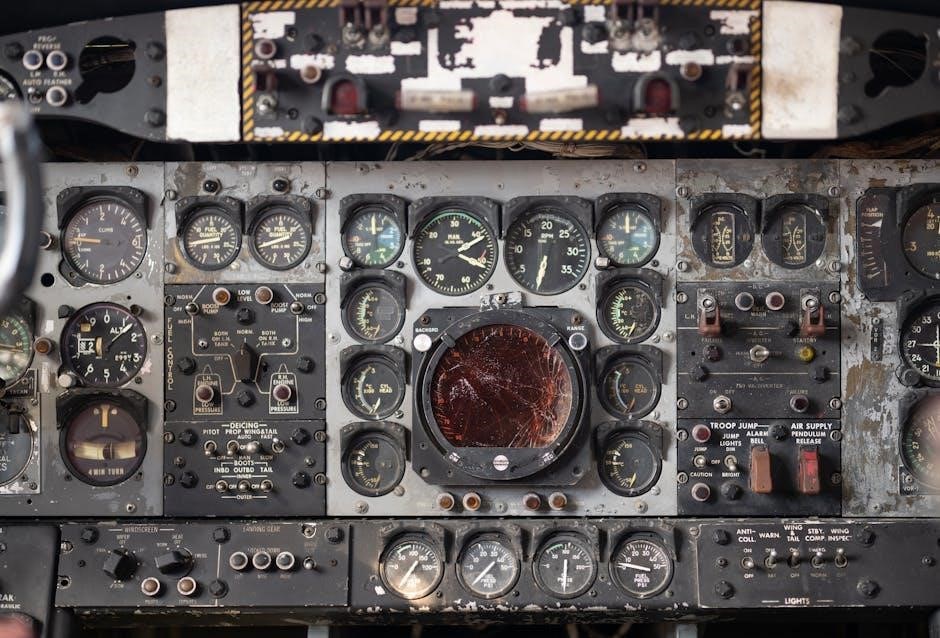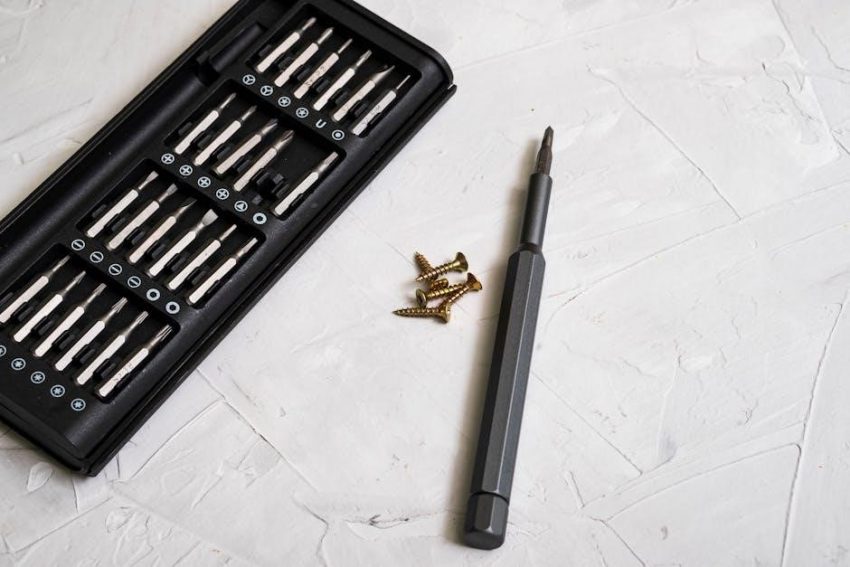The 2011 Honda Pilot User Manual is a comprehensive guide for owners, offering detailed information on features, safety, and maintenance. Rated highly by users, it ensures optimal vehicle performance and longevity, providing essential insights for a smooth driving experience.
1.1 Overview of the 2011 Honda Pilot
The 2011 Honda Pilot is a mid-size crossover SUV known for its spacious interior, robust safety features, and advanced technology systems. Designed for both comfort and practicality, it offers ample cargo space and seating for up to eight passengers. The vehicle features a powerful V6 engine, ensuring smooth performance on various terrains. With a focus on reliability and durability, the Pilot is a popular choice for families and adventurers alike. Its user-friendly design and comprehensive manual make it easy for owners to navigate its capabilities and maintain optimal performance.
1.2 Importance of Reading the User Manual
Reading the 2011 Honda Pilot user manual is crucial for understanding vehicle features, safety protocols, and maintenance requirements. It provides essential information to avoid damage and ensure optimal performance. The manual highlights symbols and warnings to guide owners in proper usage and troubleshooting. By familiarizing yourself with the content, you can enhance safety, efficiency, and overall driving experience. Regularly referring to the manual helps in maintaining the vehicle’s longevity and addressing potential issues promptly. It’s a valuable resource for maximizing the benefits of owning a Honda Pilot and ensuring a smooth, worry-free ownership experience.
1.3 Where to Find the User Manual
The 2011 Honda Pilot user manual is readily available online for free download. You can access it through various automotive websites or the official Honda portal; The manual is provided in PDF format, making it easy to view and print. It is highly recommended to keep a copy in your vehicle for quick reference. Additionally, the manual can be downloaded from platforms like ManualsLib or ManualsOnline. Ensure you have the latest version to access the most accurate and updated information for your 2011 Honda Pilot.

Key Features of the 2011 Honda Pilot
The 2011 Honda Pilot features a versatile design, combining a robust exterior with a spacious interior. It offers advanced technology, comfort, and safety features for a seamless driving experience.
2.1 Exterior Design and Dimensions
The 2011 Honda Pilot features a rugged yet aerodynamic exterior design, with a boxy SUV profile and a flat hood. Its dimensions include a wheelbase of 109.2 inches, an overall length of 191.4 inches, and a height of 72.7 inches. The Pilot offers a commanding presence with its chrome grille, wraparound headlights, and integrated bumpers; Practical features like a rearview camera, roof rails, and a power tailgate enhance functionality. The exterior is designed for versatility, catering to both on-road comfort and off-road capability, making it a reliable choice for families and adventurers alike.
2.2 Interior Comfort and Space
The 2011 Honda Pilot offers a spacious and comfortable interior, seating up to eight passengers with ample legroom and headroom. The second and third rows provide versatile seating options, including a fold-down armrest and split-folding seats for added convenience. Cargo space is generous, with 16.5 cubic feet behind the third row and up to 87 cubic feet with all rear seats folded. The interior features a modern design with soft-touch materials, while optional upgrades like heated front seats and a leather-trimmed interior enhance comfort. The Pilot balances practicality and refinement, making it ideal for families and long trips.
2.3 Technology and Entertainment Systems
The 2011 Honda Pilot features a range of advanced technology and entertainment systems to enhance the driving experience. The multi-information display provides essential vehicle data, while the available rearview camera improves visibility when reversing. The audio system includes a 7-speaker setup, USB connectivity, and an auxiliary input jack for seamless music integration. Optional upgrades like a voice-activated navigation system with a high-resolution display and Bluetooth connectivity offer added convenience. The rear entertainment system, complete with a 9-inch screen and wireless headphones, keeps passengers entertained on long journeys, ensuring a comfortable and enjoyable ride for everyone.

Safety Features of the 2011 Honda Pilot
The 2011 Honda Pilot prioritizes safety with a multi-layered approach, including structural integrity, electronic stability control, and optional collision mitigation systems, earning top safety ratings.
3.1 Airbag System
The 2011 Honda Pilot is equipped with a comprehensive airbag system designed to enhance occupant safety. It features dual-stage, multiple-threshold front airbags for the driver and front passenger, as well as side airbags integrated into the front seats. Additionally, the Pilot includes side curtain airbags with a rollover sensor to protect all three rows of seating. The system is tailored to deploy based on crash severity and occupant position, with sensors adjusting inflation force to minimize injury risk. The airbag system works in conjunction with the seatbelt pretensioners to maximize protection during collisions. Always refer to the manual for specific guidelines on airbag maintenance and operation.
3.2 Brake System
The 2011 Honda Pilot features a robust brake system designed for reliable stopping power. It includes power-assisted ventilated front disc brakes and solid rear disc brakes, ensuring consistent performance. The system incorporates an Anti-Lock Braking System (ABS) to prevent wheel lockup during hard braking, enhancing control on various road surfaces. Regular maintenance, such as inspecting brake pads and fluid levels, is crucial for optimal functionality. Drivers should also be aware of the brake assist feature, which amplifies braking force in emergency situations. Proper care of the brake system is essential for safety and longevity. Always refer to the manual for specific maintenance guidelines.
3.4 Electronic Stability Control
The 2011 Honda Pilot is equipped with Electronic Stability Control (ESC), a sophisticated system designed to enhance vehicle stability and control. ESC monitors the vehicle’s direction and compares it to the driver’s intended path. If the system detects a loss of traction or skidding, it automatically adjusts engine power and applies targeted braking to individual wheels to restore stability. This feature is especially beneficial during sharp turns or slippery road conditions. The ESC works seamlessly with the Anti-Lock Braking System (ABS) to ensure maximum safety and control. Drivers can trust this system to help maintain command of the vehicle in challenging driving situations.

Maintenance and Care
Regular maintenance is essential to ensure the 2011 Honda Pilot performs optimally. Schedule inspections, oil changes, and tire rotations as recommended in the owner’s manual.
4.1 Scheduled Maintenance
Regular scheduled maintenance is crucial for the 2011 Honda Pilot to ensure reliability and longevity. Follow the recommended maintenance schedule outlined in the user manual. Oil changes should occur every 5,000 to 7,500 miles, depending on driving conditions. Tire rotations are recommended every 6,000 to 8,000 miles to maintain even tread wear. Additionally, inspect and replace filters, belts, and fluids as specified. Keeping up with scheduled maintenance helps prevent unexpected repairs and maintains optimal performance. Always refer to the manual for specific intervals and procedures tailored to your vehicle’s needs.
4.2 Oil Change Guidelines
The 2011 Honda Pilot requires regular oil changes to maintain engine health. Use 5W-20 viscosity oil for optimal performance. Change the oil every 5,000 to 7,500 miles, depending on driving conditions. Severe driving conditions, such as frequent stop-and-go traffic or extreme temperatures, may require more frequent changes. Always use a genuine Honda oil filter or equivalent quality. Dispose of used oil and filters responsibly. Refer to the manual for step-by-step instructions and recommendations. Keeping track of oil change intervals ensures your vehicle runs smoothly and prolongs engine life. Proper maintenance is key to avoiding costly repairs.
4.3 Tire Pressure and Rotation
The 2011 Honda Pilot requires proper tire pressure to ensure safety and efficiency. Check pressure monthly and before long trips using the Tire Information Label on the driver’s doorjamb. Rotate tires every 5,000 to 8,000 miles following the recommended pattern in the manual. Uneven wear can reduce traction and shorten tire life. Always use the correct tire size and type specified by Honda. Proper tire maintenance enhances fuel efficiency, handling, and overall vehicle performance. Regular checks and rotations are essential for optimal driving experience and safety on the road.

Performance and Fuel Efficiency
The 2011 Honda Pilot features a 3.5L V6 engine with Variable Cylinder Management, delivering 250 horsepower and 253 lb-ft of torque. It achieves up to 20 mpg combined, balancing power and efficiency for both city and off-road driving.
5.1 Engine Specifications
The 2011 Honda Pilot is equipped with a powerful 3.5-liter V6 engine, featuring Honda’s innovative Variable Cylinder Management (VCM) system. This engine produces 250 horsepower at 5,700 rpm and 253 lb-ft of torque at 4,800 rpm. The VCM technology enhances fuel efficiency by deactivating cylinders during low-load driving conditions, such as cruising or light acceleration. The engine is paired with a fuel injection system that ensures precise fuel delivery, optimizing performance and reducing emissions. This combination provides a smooth and responsive driving experience, making the Pilot well-suited for both city commutes and family adventures.
5.2 Transmission and Drivetrain
The 2011 Honda Pilot features a smooth 5-speed automatic transmission that delivers seamless gear shifts and responsive acceleration. It is paired with a Variable Torque Management 4-wheel drive system, which optimizes traction and stability on various road conditions. The drivetrain is designed to enhance control on slippery surfaces and improve towing capability. By efficiently distributing power to all four wheels, the system ensures confident handling and maximizes performance. This configuration makes the Pilot versatile for both urban commuting and off-road adventures, providing a balanced blend of capability and reliability.
5.3 Fuel Economy Ratings
The 2011 Honda Pilot offers EPA-estimated fuel economy ratings of up to 17 MPG in the city and 23 MPG on the highway for two-wheel-drive models, while four-wheel-drive models achieve 16 MPG city and 22 MPG highway. These ratings make the Pilot a practical choice for families seeking a balance between performance and efficiency. Factors like driving habits, terrain, and proper maintenance can influence actual mileage. Regularly checking tire pressure and following recommended maintenance schedules can help optimize fuel efficiency for a more economical driving experience.

Comfort and Convenience
The 2011 Honda Pilot provides a spacious, ergonomic interior with features like adjustable seating, tri-zone climate control, and advanced infotainment systems, ensuring comfort for all passengers.
6.1 Seating and Cargo Space
The 2011 Honda Pilot offers versatile seating for up to eight passengers, with three rows of seating. The second and third rows can be folded flat to maximize cargo space, providing up to 87 cubic feet of storage. The vehicle also features underfloor storage compartments for added convenience. With its spacious design, the Pilot easily accommodates both passengers and luggage, making it ideal for family trips or daily errands. The 60/40 split-folding second-row seats and 50/50 split-folding third-row seats allow for customizable cargo and passenger configurations.
6.2 Climate Control Systems
The 2011 Honda Pilot features a tri-zone automatic climate control system, allowing driver, front passenger, and rear passengers to set individual temperature preferences. The system includes air conditioning, heating, and ventilation controls, ensuring comfort in all weather conditions. Rear seat passengers benefit from dedicated controls and air vents for optimal airflow. The climate system also incorporates an air filtration feature to improve cabin air quality. This advanced system ensures a comfortable driving experience for all occupants, regardless of the outside conditions or seating position.
6.3 Infotainment and Navigation
The 2011 Honda Pilot offers an advanced infotainment system designed for entertainment and convenience. It features a high-resolution touchscreen display, AM/FM radio, CD player, and USB connectivity for iPod or USB flash drives. The system also includes Bluetooth HandsFreeLink for seamless phone integration and audio streaming. For navigation, an optional satellite-linked system provides voice recognition, turn-by-turn directions, and real-time traffic updates. Steering wheel-mounted controls allow drivers to manage audio, phone, and navigation functions without distractions. This system enhances the driving experience by combining entertainment, connectivity, and navigation in a user-friendly interface.
Driving Tips and Best Practices
Adopt safe driving habits, optimize fuel efficiency, and handle diverse terrains confidently. Accelerate smoothly, maintain proper braking distances, and adjust driving styles for varying road conditions.
7.1 Safe Driving Habits
Developing safe driving habits is essential for a secure and enjoyable experience in your 2011 Honda Pilot. Always wear your seatbelt and ensure all passengers do the same. Adjust your seat, mirrors, and steering wheel for optimal comfort and visibility. Avoid distractions like texting or eating while driving. Maintain a safe following distance and reduce speed in adverse weather conditions. Use turn signals consistently and be mindful of blind spots. Regularly check your surroundings, especially when changing lanes or reversing. By prioritizing safety, you can minimize risks and protect yourself and others on the road.
7.2 Optimizing Fuel Efficiency
To maximize fuel efficiency in your 2011 Honda Pilot, adopt smart driving habits. Maintain a consistent speed and avoid aggressive acceleration, as these can lower gas mileage. Use cruise control on highways to keep a steady pace. Ensure your vehicle is well-maintained—regular oil changes and proper tire pressure can improve efficiency. Remove unnecessary weight from the vehicle and minimize idling time to conserve fuel. By following these tips, you can enhance your SUV’s fuel economy and reduce operating costs.
7.3 Handling Different Terrain
Adapt your driving to suit various terrains for optimal performance and safety in your 2011 Honda Pilot; On paved roads, maintain moderate speeds and avoid sudden maneuvers. For dirt or gravel roads, reduce speed slightly and increase following distance to account for reduced traction. In snowy or icy conditions, enable the Vehicle Stability Assist system and use gentle inputs on the accelerator and steering wheel. When driving in sand, maintain momentum and avoid sudden turns. For off-road excursions, engage the four-wheel-drive mode and use low-range gearing if necessary. Always keep an eye on ground clearance to prevent damage. Stay alert and adjust your driving accordingly to navigate different terrains confidently.

Troubleshooting Common Issues
Consult this section to diagnose and resolve common issues with your 2011 Honda Pilot. From warning lights to mechanical concerns, find solutions to keep your vehicle running smoothly.
8.1 Diagnosing Warning Lights
Understanding warning lights on your 2011 Honda Pilot is crucial for maintaining its health. Refer to the user manual for a detailed guide to each indicator. Common lights include the oil change indicator, battery light, and ABS light. If a light illuminates, consult the manual to identify its meaning. Some issues may require immediate attention, while others can be addressed during routine maintenance. Familiarize yourself with these symbols to ensure timely repairs and prevent potential damage. Regular checks can help you address issues before they escalate.
8.2 Solving Battery Issues
If your 2011 Honda Pilot experiences battery problems, start by checking connections for tightness and corrosion. A dead battery may require jump-starting, but ensure you follow proper procedures to avoid damage. If issues persist, test the battery voltage using a multimeter. Low voltage or irregular readings indicate a failing battery. Avoid DIY repairs if unsure, as improper handling can cause further issues. Always use genuine Honda parts for replacements. For detailed troubleshooting, refer to the user manual or consult a certified technician to ensure safety and optimal performance.
8.3 Addressing Common Complaints
Common complaints for the 2011 Honda Pilot often relate to uneven tire wear, noisy brakes, or Bluetooth connectivity issues. For tire wear, ensure proper rotation schedules and check alignment. Noisy brakes may require cleaning or replacing pads. Connectivity problems can be resolved by resetting the system or updating software. Always refer to the manual for specific guidance. If issues persist, contact a Honda service center for professional assistance. Regular maintenance and updates can help prevent recurring problems, ensuring a smooth and enjoyable driving experience.

Accessories and Customization
The 2011 Honda Pilot offers various accessories to enhance functionality and style, including roof racks, cargo organizers, and custom seat covers for personalized comfort and utility.
9.1 Genuine Honda Accessories
Genuine Honda accessories are designed to perfectly complement your 2011 Honda Pilot, ensuring a seamless fit and enhanced functionality. These accessories, available through authorized Honda dealers or the official Honda website, include items like cargo nets, roof racks, and bike attachments. Each accessory is rigorously tested to meet Honda’s high standards for quality and durability. By choosing genuine Honda products, you maintain your vehicle’s warranty and ensure optimal performance. They are specifically tailored to your Pilot’s model year, guaranteeing compatibility and ease of installation.
Popular accessories include trunk organizers, seat covers, and towing equipment, all crafted to enhance your driving experience while preserving the vehicle’s aesthetic appeal. Always verify compatibility with your specific trim level before purchasing. Genuine Honda accessories offer peace of mind and long-term satisfaction for Pilot owners seeking to customize their vehicle with trusted, high-quality components.
9.2 Customizing the Interior
Customizing the interior of your 2011 Honda Pilot enhances comfort and personal style. Popular options include premium seat covers, floor mats, and dashboard trim kits. Ambient lighting, cargo organizers, and rear seat entertainment systems are also great additions for functionality. For a polished look, consider upgrading to wood-grain or carbon-fiber interior accents. Always consult the user manual for compatibility and installation guidelines to ensure modifications align with Honda’s standards. Customization allows you to tailor your Pilot’s interior to your preferences while maintaining its durability and aesthetic appeal.
When personalizing, focus on practicality and comfort to create a space that reflects your lifestyle and driving habits.
9.3 Upgrading the Exterior
Upgrading the exterior of your 2011 Honda Pilot enhances its visual appeal and functionality. Consider adding roof rails, side steps, or a rear spoiler for a sporty look. Alloy wheels and tire upgrades can improve performance and style. Front and rear bumper replacements or skid plates add durability. LED lighting, fog lights, or a grille upgrade can modernize the design. Window visors and a sunroof visor enhance aerodynamics. Always choose genuine Honda accessories or compatible aftermarket parts to maintain quality. Consult the user manual for installation guidelines to ensure upgrades align with Honda’s specifications and safety standards.

Warranty and Service Information
The 2011 Honda Pilot comes with a comprehensive warranty program, including basic and powertrain coverage. Regular maintenance ensures warranty validity. Contact Honda dealers for detailed service recommendations and scheduling.
10.1 Understanding the Warranty
The 2011 Honda Pilot is backed by a comprehensive warranty program designed to protect your investment. The basic warranty typically covers repairs and replacements for parts and labor due to defects for 3 years or 36,000 miles. The powertrain warranty extends coverage for up to 5 years or 60,000 miles, ensuring critical engine and transmission components are protected. Additional warranties may cover corrosion, emissions, and accessories. Review your owner’s manual or contact a Honda representative for specific terms and conditions, as coverage details may vary. Proper maintenance is essential to maintain warranty validity.
10.2 Scheduling Service Appointments
Scheduling regular service appointments is crucial for maintaining your 2011 Honda Pilot’s performance and ensuring warranty compliance. Use Honda’s online service portal or contact your local dealership to book an appointment. Provide your vehicle’s VIN and preferred date to confirm. Dealerships offer convenient hours, and some provide loaner vehicles or shuttle services. Regular maintenance, such as oil changes and inspections, should be scheduled every 5,000 to 7,500 miles, as outlined in your manual. Prompt service ensures optimal vehicle health and prevents potential issues.
10.3 Contacting Honda Support
To contact Honda Support for inquiries or assistance with your 2011 Honda Pilot, visit the official Honda website or call their customer service hotline. Support is available for troubleshooting, maintenance questions, or general information. You can also use the live chat feature on their website for quick assistance. Ensure you have your vehicle’s VIN ready for faster service. Additionally, Honda dealerships offer support for specific concerns, providing expert guidance tailored to your needs. Reaching out to Honda Support helps you maintain your vehicle and address any issues promptly and effectively.

Environmental Considerations
The 2011 Honda Pilot emphasizes eco-friendly driving with fuel efficiency and reduced emissions. Proper disposal of waste materials is crucial for environmental conservation. Adopting eco-conscious habits helps minimize the vehicle’s carbon footprint.
11.1 Emissions and Eco-Friendliness
The 2011 Honda Pilot is designed to minimize its environmental impact through advanced emissions control systems. It features a catalytic converter and precise fuel injection to reduce harmful emissions. The engine is calibrated to optimize fuel efficiency, contributing to lower carbon dioxide output. Honda’s commitment to eco-friendliness is evident in its adherence to strict EPA standards. By reducing pollutants and enhancing fuel economy, the Pilot promotes sustainable driving without compromising performance. This makes it a responsible choice for environmentally conscious drivers seeking a balance between power and eco-friendliness.
11.2 Proper Disposal of Waste
Proper disposal of waste is crucial for maintaining environmental health. The 2011 Honda Pilot’s user manual emphasizes responsible disposal of vehicle-related waste, such as used batteries, oils, and filters. These materials must be handled according to local regulations to prevent contamination. Owners are encouraged to recycle whenever possible and to use authorized facilities for hazardous waste. Proper disposal not only protects the environment but also aligns with legal and ethical practices. Refer to the manual for specific guidelines on safely managing and disposing of automotive waste.
11.3 Reducing Carbon Footprint
Reducing your carbon footprint with the 2011 Honda Pilot involves adopting eco-friendly driving habits and maintenance practices. Use the Eco Assist feature to monitor and improve fuel efficiency. Drive at consistent speeds, avoid excessive idling, and ensure proper tire pressure to minimize emissions. Regularly maintaining the air filter and engine ensures optimal performance. Consider using eco-friendly cleaning products for the vehicle and recycle materials when possible. By combining these practices, you can significantly lower your environmental impact while enjoying the reliability of your Honda Pilot.
The 2011 Honda Pilot combines performance, safety, and efficiency, making it a reliable choice. Proper maintenance and responsible driving ensure optimal experience and longevity for years.
12.1 Recap of Key Features
The 2011 Honda Pilot offers a robust 3.5L VTEC V6 engine, delivering 250 horsepower and 253 lb-ft of torque. It features a smooth 5-speed automatic transmission and optional all-wheel drive for enhanced traction. The SUV provides ample seating for up to eight passengers, with generous cargo space and versatile folding seats. Advanced technology includes a rearview camera, Bluetooth connectivity, and an optional navigation system; Safety highlights include a comprehensive airbag system, electronic stability control, and anti-lock brakes. These features combine to make the Pilot a practical, reliable, and family-friendly vehicle.
12.2 Final Tips for Owners
Regularly schedule maintenance to ensure optimal performance and longevity of your 2011 Honda Pilot. Always refer to the user manual for specific guidelines on oil changes, tire rotations, and fluid checks. Store your vehicle in a dry, shaded area during extended periods of inactivity to protect the exterior and interior. Keep the manual handy for quick reference and review it periodically to stay informed about your vehicle’s needs. By following these tips, you can enjoy a safe, reliable, and enjoyable driving experience with your Honda Pilot for years to come.
12.3 Staying Connected with Honda
Stay connected with Honda by registering your 2011 Pilot on their official website for personalized support and updates. Subscribe to Honda’s newsletter for the latest news, recalls, and maintenance reminders. Download the Honda Owner’s App for convenient access to manuals, service history, and dealership locations. Engage with Honda’s customer support for any inquiries or concerns. Additionally, participate in Honda owner forums and communities to share experiences and gain insights from fellow drivers. Keeping in touch ensures you’re always informed and supported throughout your ownership journey.
